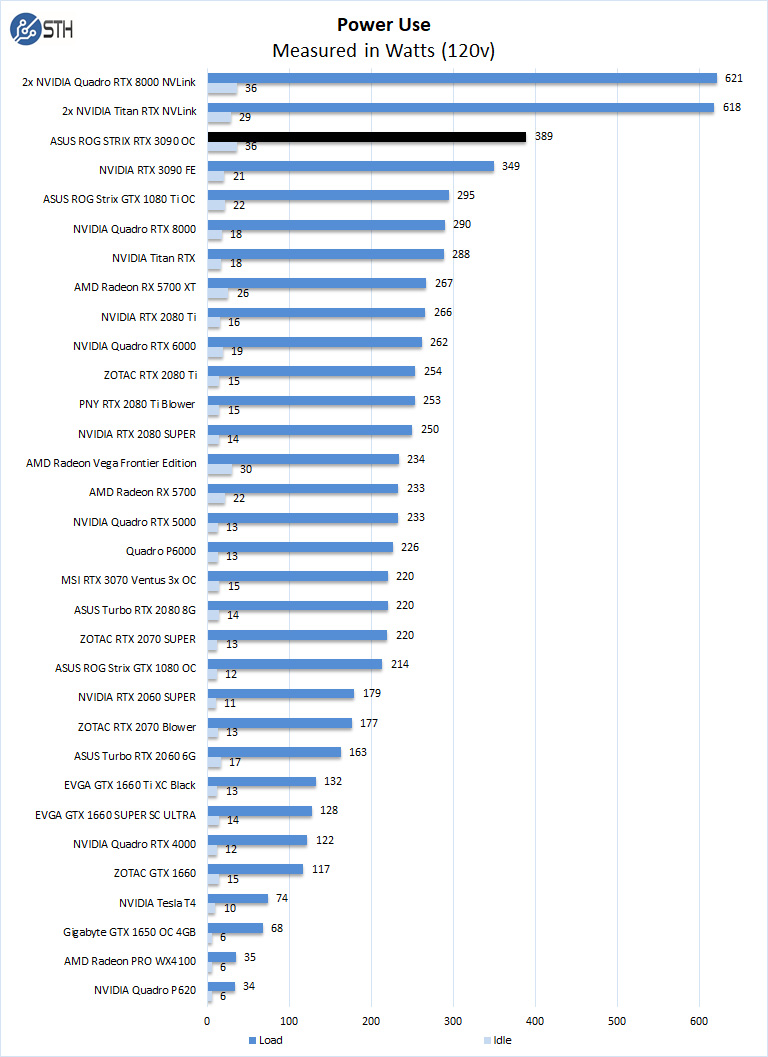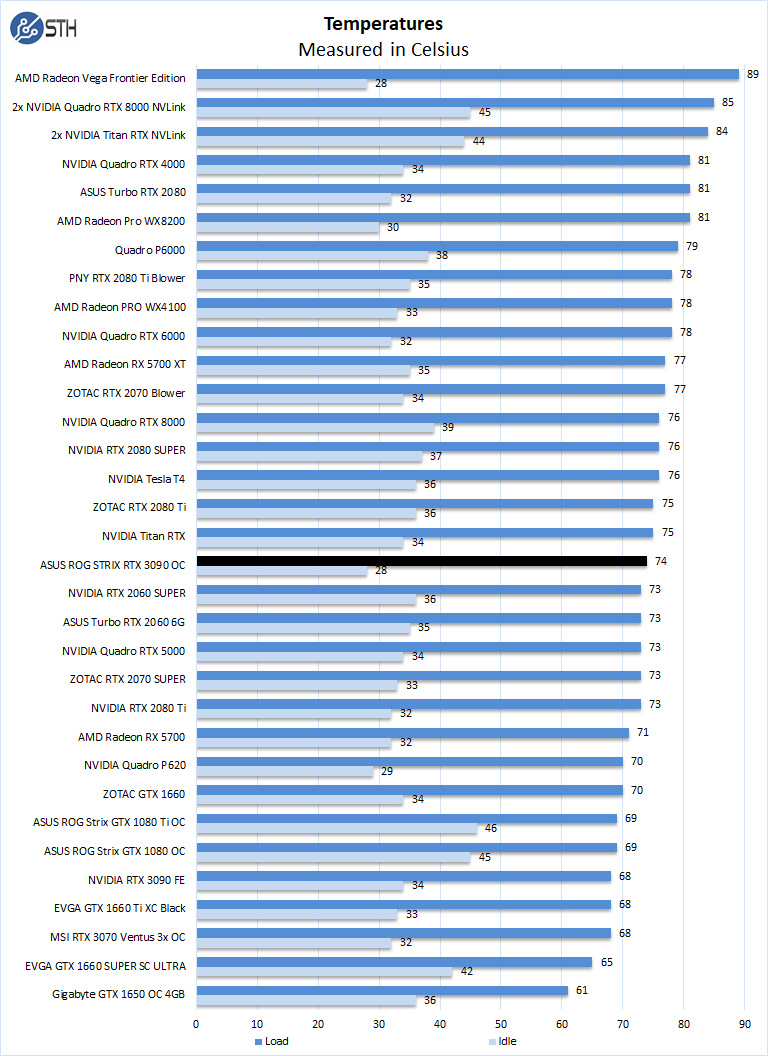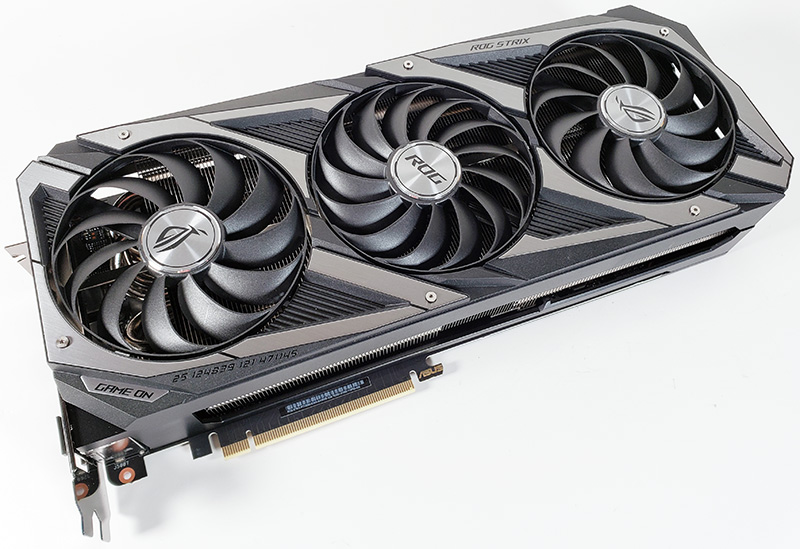Power Tests
For our power testing, we used AIDA64 to stress the ASUS ROG STRIX RTX 3090 OC, then HWiNFO to monitor power use and temperatures.

After the stress test has ramped up the ASUS ROG STRIX RTX 3090 OC, we see it tops out at 389 watts under full load and 36 watts at idle. Those are notably higher than the Founders Edition card.
Cooling Performance
A key reason that we started this series was to answer the cooling question. Blower-style coolers have different capabilities than some of the large dual and triple fan gaming cards. At this point, it is fairly difficult to get the latest high-end GPUs with blower-style coolers, although that is largely due to availability.

Temperatures for the ASUS ROG STRIX RTX 3090 OC ran at 74C under full load and 28C at idle. The load numbers are higher than the Founders Edition.
Final Words
In this review, we learned that the NVIDIA GeForce RTX 3090 Founders Edition performed relatively well compared to the ASUS unit. In most of our tests, the ASUS ROG Strix NVIDIA GeForce RTX 3090 OC Edition was slightly faster than the Founders Edition. There were certainly some tests, such as our deep learning training tests where the ASUS unit performed much better than the NVIDIA-branded card. When we look at the power consumption data, it seems that along with higher clock speeds, the ASUS card is using more power and getting better results.

If we had to choose between the ASUS ROG Strix NVIDIA GeForce RTX 3090 OC Edition and the NVIDIA Founders Edition for deep learning training, we would pick the ASUS. The extra power consumption is offset by the higher performance. In other tests, the ASUS card was generally faster but by a smaller margin. Perhaps better stated, if the cards were priced the same, we would pick the ASUS card over the NVIDIA branded card. Since we paid more than MSRP for this card, there is an argument to be made that we would be better off picking the lower cost of the two options or perhaps just whatever is available. The jump to 24GB of memory is a major leap over the RTX 3080 so if you are training on your desktop GPU, this can have a big impact.




Great stuff, William! Thanks very much.
Thanks for the careful work! I would very much like to see how the Radeon VII, Radeon VII Pro and Titan V GPUs compare to the mix of performance numbers already obtained. These three graphics cards would have different performance characteristics compared to the others. It would be interesting to see the trade-off between fp64 and the 3D visualisation capabilities.
@Eric Olson, would be good to see the FP64 bars, certainly. VII Fp16 is not chopped liver either.